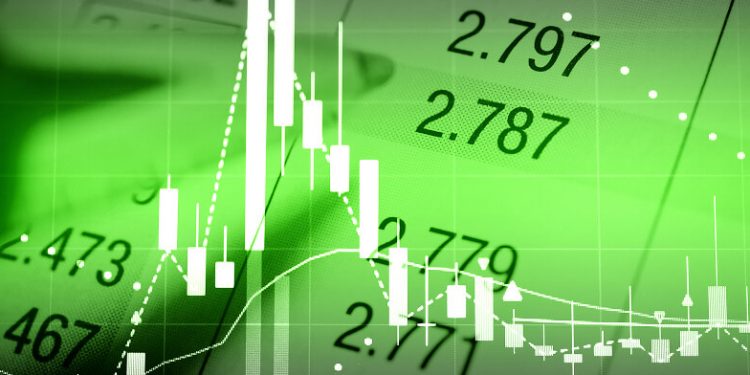Algorithmic trading, or algo trading, minimises human error and enhances precision. While this method has been predominantly used by institutional investors, it is increasingly attracting the interest of retail traders, especially in the derivatives market. This article explores how algorithmic trading is a suitable avenue for retail traders in derivatives.
What Are Derivatives?
Derivatives are financial contracts that derive their value from underlying assets like stocks, bonds, commodities, or indices. Common types include futures, options, and swaps. These instruments are widely used for hedging, speculation, and arbitrage. Due to their leverage and complexity, they often attract traders seeking higher returns.
Begin your investing journey today. Your Demat account is the first step.
Understanding Algorithmic Trading
Algorithmic trading utilises advanced mathematical models and automation to execute trades swiftly. Minimising human intervention significantly reduces errors caused by emotions or fatigue. These systems can rapidly identify market inefficiencies, capitalise on minor price discrepancies, and manage high-volume transactions with remarkable precision.
Features of Algorithmic Trading
Algorithmic trading stands out due to its numerous features that offer distinct advantages over traditional trading methods.
- Automation: By automating the trading process, algorithmic systems eliminate the need for constant human monitoring, enabling trades to be executed even when traders are not actively watching the markets.
- Speed: Algorithms can process vast amounts of market data and execute orders in milliseconds, a speed that is impossible for human traders to match. This is especially crucial in the highly volatile derivatives market.
- Accuracy: Unlike manual trading, where human error can lead to costly mistakes, algorithms follow precise instructions, ensuring greater accuracy in trade execution.
- Backtesting: Traders can test their strategies on historical data to gauge potential performance. This feature allows for refining strategies before they are deployed in live markets.
- Consistency: Emotions often lead to inconsistent trading decisions. Algorithms execute trades based on predefined criteria, maintaining consistency even in volatile market conditions.
- Diversification: Algorithmic trading allows traders to manage multiple accounts or trade in different markets simultaneously.
- Risk Management: Algorithms can be programmed with risk management parameters, such as stop-loss orders and position sizing, to minimise potential losses.
- Market Analysis: These systems can continuously monitor market trends and analyse vast datasets to identify profitable opportunities.
What is Algo Trading for Retail Investors?
Algo trading for retail investors uses automated systems to execute trades based on predefined criteria, such as market conditions, price movements, or volume. This method allows individual traders to leverage technology once exclusive to institutional investors. Automated derivatives trading enables retail traders to participate in complex markets with enhanced speed and precision.
Why Algorithmic Trading Appeals to Retail Traders
As technology becomes more accessible, retail traders increasingly turn to algorithmic trading to gain a competitive edge in the fast-moving derivatives market.
- Speed and Efficiency: Algorithms operate at speeds beyond human capability, which is essential in the fast-paced derivatives market.
- Elimination of Emotional Bias: Automated systems follow logical parameters, helping traders avoid impulsive decisions.
- Backtesting and Optimisation: Retail traders can refine strategies by testing them against historical data before applying them in real time.
- Market Accessibility: Technological advancements and algorithmic trading platforms with API integrations have made automated derivatives trading more approachable for retail traders.
Benefits of Algorithmic Trading for Retail Traders in Derivatives
Despite the challenges, algorithmic trading offers retail participants distinct advantages that can enhance their trading experience and outcomes.
- Scalability: Once developed, algorithms can handle multiple markets and large trade volumes efficiently.
- Diversification: Automated trading enables traders to spread risk across various assets simultaneously.
- Continuous Market Monitoring: Algorithms operate 24/7, identifying opportunities humans might overlook.
- Consistent Execution: Algorithms follow predefined rules, ensuring consistent trading performance.
How Retail Traders Can Get Started
Starting with algorithmic trading requires a step-by-step approach, combining education, strategy development, and risk control.
- Education and Research: Learning about financial markets, trading strategies, and programming languages like Python is crucial.
- Choosing the Right Platform: Algorithmic trading platforms offering robust backtesting, paper trading, and API access are ideal for beginners.
- Developing and Testing Strategies: Before investing real capital, simulated testing of algorithms is essential.
- Implementing Risk Management: Effective use of stop-loss orders, position sizing, and portfolio diversification helps mitigate risks.
Challenges Faced by Retail Traders in Algorithmic Trading
Despite the advantages, retail traders face several obstacles when adopting algorithmic trading in derivatives.
- High Initial Costs: Setting up and maintaining algo trading systems requires substantial investment in technology and reliable data feeds.
- Technical Expertise: A combination of financial market knowledge and programming skills is essential, posing a steep learning curve for many retail traders.
- Market Competition: Retail traders face stiff competition from institutional players with superior resources and cutting-edge technology.
- Regulatory Compliance: Adhering to financial regulations is critical to avoid penalties and trading restrictions.
- Risk of System Failures: Technical glitches can lead to substantial financial losses, emphasising the need for robust risk management.
Common Myths About Algorithmic Trading
Many misconceptions surround algorithmic trading, often discouraging retail traders from exploring its potential. Here are a few common myths clarified:
- It Guarantees Profits: While algorithms can improve trading efficiency, they do not eliminate market risks.
- Only for Experts: With educational resources and supportive communities, motivated retail traders can learn and implement algorithmic trading.
- Requires Extensive Capital: While initial costs exist, affordable platforms are suitable for small-scale retail traders.
The Future of Algorithmic Trading for Retail Investors
As technology advances, the barriers to entry for retail algorithmic trading are diminishing. Artificial intelligence and machine learning are enhancing predictive accuracy and pattern recognition. Moreover, the rise of low-cost platforms and open-source resources provides retail traders more opportunities to participate in the derivatives market.
Ethical and Regulatory Considerations
As algorithmic trading grows, so does the need for ethical practices and stringent regulations. Market manipulation and unfair advantages are concerns regulators aim to mitigate. Retail traders must ensure they comply with market rules and maintain transparency.
Conclusion
Algorithmic trading in derivatives offers substantial opportunities and challenges for retail traders. While speed, efficiency, and consistency are clear advantages, the need for technical expertise, financial resources, and effective risk management cannot be overlooked. With dedication and strategic planning, retail traders can leverage automated derivatives trading to enhance market performance.






